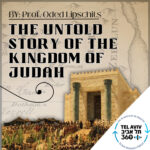X

תל אביב 360 – אוניברסיטת תל אביב: ערוץ הפודקסטים
(C4)The Untold Story of the Shephelah in Sennacherib’s campaign
/

(C4)The Untold Story of the Shephelah in Sennacherib’s campaign
Mar 3, 2024 • 00:30:53
Towards the end of the eighth century BCE, Judah was at the peak of its development as a mature and developed kingdom. It was based on a fairly dense hierarchy of settlements, which was spread throughout all parts of the kingdom, and included farms, villages, secondary settlements and central towns.…
עדכון זמן הקפצנו אותך לנקודה הקודמת שעצרת
[לקרוא עוד...]
[פחות...]


